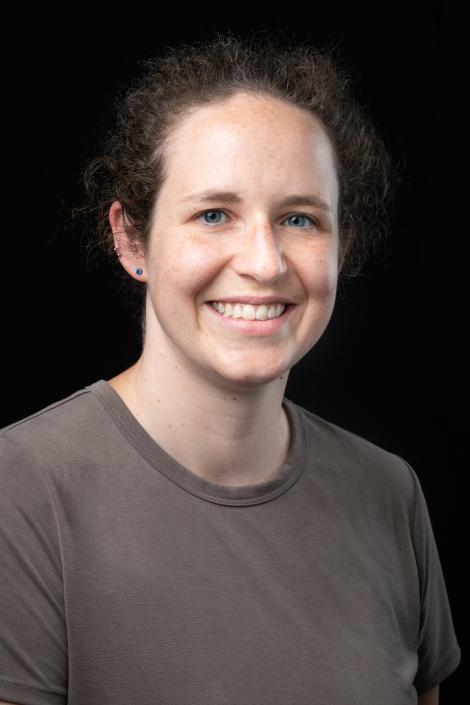Education
- Ph.D. Entomology, University of Florida, 2012, Gainesville, FL
- B.S. Genetics, University of Georgia, 2007, Athens, GA
- B.S.E.S. Entomology, University of Georgia, 2007, Athens, GA
Professional Experience
- Assistant Professor, Department of Biology, 2019 - Present, Appalachian State University, Boone, NC
- Postdoctoral Associate, Department of Biological Sciences, 2014 - 2019, University of Alabama, Tuscaloosa, AL
- Postdoctoral Associate, Department of Entomology, 2013 - 2014, Purdue University, West Lafayette, IN
Areas of Interest
- Evolutionary Biology
- Novel Adaptations
- Transcriptomics and Genomics
- Entomology
- Systematics
- Insect Natural History
Website: https://sites.google.com/appstate.edu/scott-chialvo-lab
Research Statement
Novel adaptations can initiate adaptive radiations, allow for the exploitation of new ecological opportunities, and increase fitness and specialization. Significant questions that remain are: 1) How do these adaptations arise? and 2) What roles do natural selection, stochastic events, ecological pressures, and developmental constraints play in the trait's origin? The evolution and development of novel morphological structures have been intensively studied. Far less is known about the evolution of novel biochemical and metabolic adaptations. In particular, how does a novel biochemical trait of interest evolve when it may have associated fitness costs and experience inconsistent selection due to disparate pressures within populations?
My laboratory is examining these questions with regards to the evolution of toxin tolerance in mushroom-feeding Drosophila. These fly species are considered generalist feeders on a broad range of fleshy mushrooms, including toxic Amanita species that are defended with cyclopeptide toxins. Mushroom-feeding Drosophila in the immigrans-tripunctata radiation are some of the only eukaryotes that can tolerate high doses of these toxins and use toxic Amanita mushrooms as hosts. To better characterize cyclopeptide tolerance in mushroom-feeding Drosophila, we combine the results of feeding assays with data generated using a variety of "-omic" methodologies, including transcriptomics, metabolomics, and genomics. We are currently beginning work to identify the alleles that contribute to toxin tolerance in four species. The results of our work will inform future predictions on how novel traits emerge and shape biodiversity and address a long-standing ecological question.
Selected Publications
- Dowdy, N.J, S. Keating, A.R. Lemmon, E.M. Lemmon, W.E. Conner, C.H. Scott Chialvo, S.J. Weller, R.B. Simmons, M.S. Sisson, and J.M. Zaspel. 2020. A deeper meaning for shallow-level phylogenomic studies: nested anchored hybrid enrichment offers great promise for resolving the tiger moth tree of life (Lepidoptera: Erebidae: Arctiinae). Systematic Entomology Early View. doi.org/10.1111/syen.12433
- Scott Chialvo, C.H., L.H. Griffin, L.K. Reed, and L. Ciesla. 2020. Exhaustive extraction of cyclopeptides from Amanita phalloides: Guidelines for working with complex mixtures of secondary metabolites. Ecology and Evolution Early View. doi.org/10.1002/ece3.6191
- Scott Chialvo, C.H., B.E. White, L.K. Reed, and K.A. Dyer. 2019. A phylogenetic examination of host use evolution in the quinaria and testacea groups of Drosophila. Molecular Phylogenetics and Evolution 130: 233-243. https://doi.org/10.1016/j.ympev.2018.10.027
- Scott Chialvo, C.H. and T. Werner. 2018. Drosophila, destroying angels, and deathcaps! Oh my! A review of mycotoxin tolerance in the genus Drosophila. Frontiers in Biology 13(2): 91-102. https://doi.org/10.1007/s11515-018-1487-1
- Scott Chialvo, C.H., P. Chialvo, J.D. Holland, T.J. Anderson, J.W. Breinholt, A.Y. Kawahara, X. Zhou, S. Liu, and J.M. Zaspel. 2018 A phylogenomic analysis of lichen-feeding tiger moths uncovers evolutionary origins of host chemical sequestration. Molecular Phylogenetics and Evolution 121: 23-34. https://doi.org/10.1016/j.ympev.2017.12.015
- Scott Chialvo, C.H., R. Che, D. Reif, A. Motsinger-Reif, and L.K. Reed. 2016. Eigenvector metabolite analysis reveals dietary effects on the association among metabolite correlation patterns, gene expression, and phenotypes. Metabolomics 12: 167. doi: 10.1007/s11306-016-117-3
- Zaspel, J., C.H. Scott, S.R. Hill, V.S. Kononenko, R. Ignell, and S.J. Weller. 2014. Population structure and geographically-based differential feeding behaviors in the fruit-piercing and skin-piercing blood feeding moth Calyptra thalictri Borkhausen (Insecta: Lepidoptera: Erebidae). Journal of Parasitology 100: 583-591.
- Scott, C.H., J.M. Zaspel, P. Chialvo*, and S.J. Weller. 2014. A preliminary molecular phylogenetic assessment of the lichen moths (Lepidoptera: Erebidae: Arctiinae: Lithosiini) with comments on palatability and chemical sequestration. Systematic Entomology 39: 286-303.
- Scott, C.H. and M.A. Branham. 2012. A preliminary phylogeny of the lichen moth tribe Lithosiini (Lepidoptera: Erebidae: Arctiinae) using morphological characters. Insect Systematics and Evolution 43: 321-369.
- Scott, C.H., M. Cashner, G.D. Grossman, and J.P. Wares. 2009. An awkward introduction: phylogeography of Notropis lutipinnis in its 'native' range and the Little Tennessee River. Ecology of Freshwater Fish 18: 538-549.
(*indicates undergraduate co-authors)

Title: Assistant Professor, Evolutionary Biology and Entomology
Department: Department of Biology
Email address: Email me
Phone: (828) 262-2672